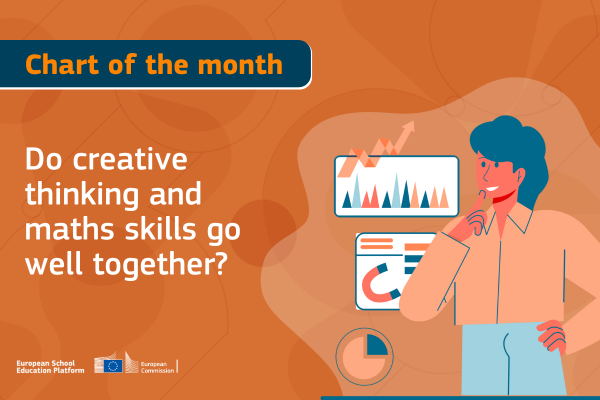Do creative thinking and maths skills go together well?

In 2022, the OECD Programme for International Student Assessment (PISA) included assessment of pupils’ creative thinking for the first time, in addition to evaluating 15-year-old pupils’ skills in mathematics, reading and science.
PISA defines creative thinking as ‘pupils’ ability to engage productively in the generation, evaluation and improvement of ideas that can result in original and effective solutions, advances in knowledge and impactful expressions of imagination’. Creative thinking empowers pupils to be innovative and enterprising, enabling them to generate new ideas, products and knowledge and actively contribute to meaningful change.
In addition to performance, PISA 2022 also reported on pupil attitudes associated with creative thinking, participation in creative activities, and opportunities to engage in creative thinking in school.
Overall, 66 countries and education systems participated in the PISA 2022 creative thinking assessment, including 23 EU countries (Austria, Ireland, Luxembourg and Sweden did not participate).
Generating, evaluating, and improving upon ideas are essential cognitive processes across all areas of the curriculum. Pupils’ creative thinking abilities are therefore likely to be positively correlated to their performance in mathematics, reading and science. As such, this chart of the month illustrates the within ‑country correlation between creative thinking and mathematics performance.
Within-country correlation between creative thinking and performance in mathematics of 15-year-olds (2022)
Source: OECD (2024). PISA 2022 Results (Volume III). Creative Minds, Creative Schools (Table III.B1.2.3).
Note: Countries are displayed in ascending order according to the within-country correlation between creative thinking and performance in mathematics among 15-year-olds in 2022. The EU average is weighted by the countries’ population aged 15. Caution is required when interpreting 20222 data for Denmark, Latvia and the Netherlands, because one or more PISA sampling standards were not met there. These countries were excluded from the calculation of the EU average.
Pupil performance in creative thinking shows a relatively strong positive correlation with performance in mathematics, with the EU average correlation coefficient being 0.7. Romania, Bulgaria and Germany display the strongest association between creative thinking and mathematics skills, while Spain, Slovenia and Estonia demonstrate the weakest correlations. The correlation between creative thinking and performance in reading and science is nearly identical, though weaker than the correlation between mathematics, reading and science.
Interestingly, the relationship between creative thinking and mathematics performance varies across skill levels and is strongest among the top and bottom performers. Half of all pupils in the top 20% for mathematics performance also rank in the top 20% for creative thinking. Similarly, more than half of all pupils in the bottom 20% for mathematics performance are also in the bottom 20% for creative thinking. Practically no pupil who struggles in mathematics excels in creative thinking, and vice versa. There is, however, greater variability in creative thinking performance among pupils in the middle ranges of mathematics performance.
These findings emphasise that, although all pupils have the potential to generate, evaluate and improve upon ideas, having at least a minimal level of mathematics proficiency is associated with enhanced creative thinking.
Disclaimer: The chart of the month does not constitute a policy position of the European Commission. Neither the European Commission nor any person acting on behalf of the Commission is responsible for any use made of the chart.
Additional information
-
Education type:School Education
-
Target audience:TeacherStudent TeacherHead Teacher / PrincipalPedagogical AdviserTeacher EducatorResearcher
-
Target audience ISCED:Primary education (ISCED 1)Lower secondary education (ISCED 2)


